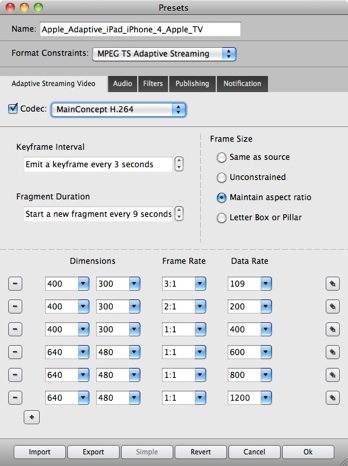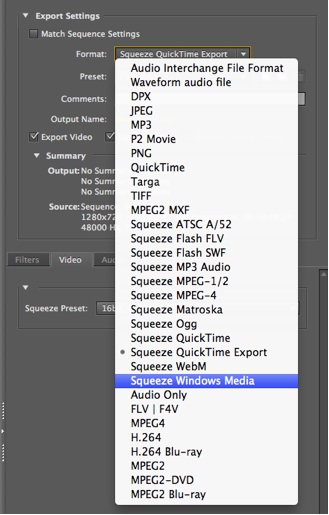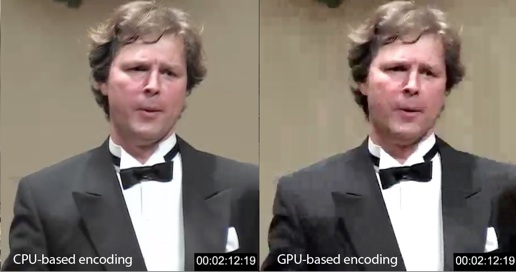Sorenson Squeeze 7: The Good, The Bad, and the Lovely
I've been working with Sorenson Squeeze 7 for awhile now, and wanted to share my thoughts and experiences today, the day the software is officially released. If you have Squeeze 6.5 or earlier, the big question is whether you should upgrade or not, so I'll address that first: The answer is a clear and concise "it depends." If you're looking for a way to encode adaptive streams for HTTP Live Streaming, or seeking the best-quality WebM footage, then it's a yes. If you're lured by the promise of GPU-accelerated H.264 encoding, then it's a probably not, at least for the moment. On the other hand, if you're currently in the market for a new desktop encoder, Squeeze 7 should be number one on your short list.
So let's proceed through this quickie tour, presented as the Good, the Bad, and the Lovely.
The Good
First, from an interface standpoint, Squeeze 7 is virtually identical to version 6.5, so you should have no trouble getting up to speed quickly in the new version. From my perspective, the most significant new feature is the ability to create all files necessary to adaptively stream to iDevices via Apple's HTTP Live Streaming, including the chunked .ts files and the .m3u8 manifest file. All you need is a CDN or server to distribute the files. In terms of workflow, you encode in the new encoder preset window shown in Figure 1, with additional H.264 encoding parameters available for each stream by clicking the edit button to the right of each stream.

Figure 1. Squeeze's adaptive streaming preset for Apple's HTTP Live Streaming.
Version 7 includes the preset shown for HTTP Live Streaming, with similar presets for Flash and Silverlight coming in version 7.1 some time in 2011. Remarkably, as far as I'm aware, Squeeze 7 is the first GUI-based desktop encoding tool that can produce the HTTP Live Streaming experience for on-demand files, which is sure to be a standard feature in this class of encoding tool going forward.
Also in the "good" category is the ability to access Squeeze's encoding presets in both the Adobe Media Encoder, shown in Figure 2, and in Final Cut Pro via the File > Export > Using QuickTime Conversion option. To be clear, you can only choose a preset from these apps; you can't access Squeeze's encoding controls, but this still eliminates the time and disk space involved with creating an intermediate file to then input into Squeeze.
During 2011, Sorenson intends to release a QuickTime Export Component that provides access to Squeeze from Apple Compressor, which will be a nice addition, but as of now, you can't access Squeeze from Compressor.

Figure 2. Accessing Squeeze presets from Adobe Media Encoder.
The Bad
In the "all that glitters is not gold" department, probably the most heralded feature in Squeeze 7-GPU accelerated H.264 encoding-does, indeed, cut encoding times by about 50%, but comes with some surprising baggage in the form of reduced quality, at least in the short term. You can see this in Figure 3, which shows CPU encoding on the left, and GPU encoding on the right.

Figure 3. GPU encoding quality can be lower than CPU.
To be fair, the drop in quality isn't pervasive; it seems to occur in clips like Figure 3 with a smooth background, though it can crop up anywhere. In addition, Sorenson is very aware of the problem, which they promise to resolve sometime during early 2011. Still, few publishers will want to use GPU-based encoding until quality is universally equal to or better than CPU-based encoding.
Note that GPU-based encoding is an option that you can enable and disable, so you can buy Squeeze now and continue to encode solely via the CPU until GPU-acceleration is fixed. In addition, Squeeze 7 can now encode multiple files to H.264 format in parallel, a great time saver for those encoding multiple H.264 files on multiple processor systems.
The Lovely
I know many of you are breathlessly awaiting the annual encoder roundup that we present in the Streaming Media Sourcebook, and I hate to spoil the surprise (Spoiler Alert! Spoiler Alert!), but if we presented our results in Academy Award format, Squeeze would pretty much win all the majors. In all three tested formats-VP6, H.264 and Windows Media-Squeeze was either best or tied for best in terms of quality, and at or near the top in terms of single and multiple file encoding times.
In our recent WebM encoding trials (available in both paperback and video), Squeeze was the only tool that produced usable WebM encoding files at or near the requested encoding parameters. Overall, it's a performance of Cuckoo's Nest or Silence of the Lambs proportions.
Pithy Summary
There are other new features in Squeeze 7, primarily relating to new format support, that you can read about in Troy Dreier's news article here. Overall, though, from this user's perspective, if you had to choose one desktop encoding tool at the start of 2011, Squeeze 7 is the obvious choice.
Related Articles
Got questions about transcoding for online streaming? A panel of insiders came together to teach the basics.
25 Mar 2011
Improved WebM support, Squeeze Server integration, and video sitemap creation all come to the OVP.
15 Mar 2011
Encoding solution gives enterprise the ability to use local servers, but go to the cloud, when needed.
01 Mar 2011
The encoding giant partners with Kulabyte to create Squeeze Live, a bandwidth-friendly solution for live events.
14 Feb 2011
With Google's announcement that it's dropping H.264 support in Chrome in favor of WebM, it's time to start looking at the format. Here's a look at how to get the best WebM quality.
12 Jan 2011
Popular encoder expands into the cloud with service that offers dedicated instances and 99.9% uptime.
02 Nov 2010
Vid.vu service works with video workflow; adds malware and phishing protection.
19 Oct 2010
Move highlights importance of video to home users, and growing trend of video sharing.
14 Jul 2010
 If you produce streaming video, Squeeze 4.5 is a product you need to download and try, even if you’re completely satisfied with your current workflow and encoding tools.
If you produce streaming video, Squeeze 4.5 is a product you need to download and try, even if you’re completely satisfied with your current workflow and encoding tools.
Mon., Nov. 27, by Jan Ozer
27 Nov 2006
Companies and Suppliers Mentioned